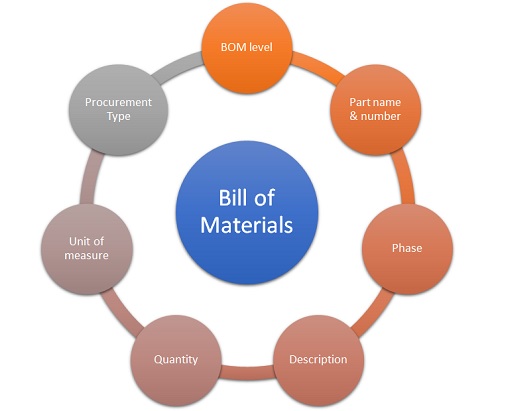- Business Concepts ›
- Operations and Supply Chain ›
- Bill of Materials (BOM)
Bill of Materials (BOM)
Definition & Importance
This article covers meaning & overview of Bill of Materials (BOM) from operations perspective.
What is meant by Bill of Materials (BOM)?
Bill of materials is a compiled list of raw input goods, sub-assemblies or any intermediary product needed to manufacture the final goods. Bill of materials basically helps in the communication during the production process so as to plan the quantity of goods that would be required to meet the demand. This is an important concept in material management during manufacturing.
Importance of Bill of Materials (BOM)
A BOM is of vital importance in Materials Requirement Planning (MRP) and Enterprise Resource Management (ERP) systems. It provides the Manufacturer’s part number (MPN) which is a series of numbers assigned to the parts by its manufacturer. Since each manufacturer provides its unique MPN to its parts, it becomes easier to track the source of a component by referring to the BOM.

Ideally a BOM should include below items:
• BOM level
• Part number
• Part name
• Phase
• Description
• Quantity
• Unit of measure
• Procurement Type
• BOM notes
The bill of materials can be formatted in three ways:
1. Single level
2. Indented
3. Modular
Also, to represent the bill of materials in a more easier form, it can also be represented in a tree format.
This article has been researched & authored by the Business Concepts Team which comprises of MBA students, management professionals, and industry experts. It has been reviewed & published by the MBA Skool Team. The content on MBA Skool has been created for educational & academic purpose only.
Browse the definition and meaning of more similar terms. The Management Dictionary covers over 1800 business concepts from 5 categories.
Continue Reading:
What is MBA Skool?About Us
MBA Skool is a Knowledge Resource for Management Students, Aspirants & Professionals.
Business Courses
Quizzes & Skills
Quizzes test your expertise in business and Skill tests evaluate your management traits
Related Content
All Business Sections
Write for Us